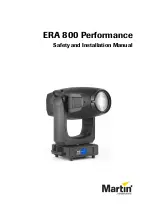
Posey Company • 5635 Peck Road, Arcadia, CA 91006-0020 USA
Phone: 1.800.447.6739 • 1.626.443.3143 • Fax: 1.800.767.3933 • www.posey.com
MADE IN CHINA
M4059 REV B 051515
© 2015 Posey Company. All rights reserved.
Posey
®
KeepSafe
®
Scout 8324
Application Instructions
Bed Pad Sensor Instructions
1. Place the sensor pad on the mattress directly
under the patient’s weight. Most patient weight
is under the buttocks. See sensor pad label for
other positions when head of bed is elevated.
(Fig. 3)
2. Use sensor pad clips at each end to attach
sensor to the mattress.
3. Be sure to route sensor cable to the alarm
unit so it is clear of all moving parts of bed to
prevent damage to the cable or the pad when
bed is raised or lowered, or when head or
knee sections are operated.
4. Plug sensor cable into receptacle on the side of the
alarm unit. (Fig. 4)
5. Alarm may fail to sound if the sensor pad is bent or folded under
the patient, or if there is weight from an object on the pad.
6. Make sure sensor cable is not in the footpath and does not pose
a tripping hazard.
Mounting the KeepSafe Scout
Before mounting alarm, check that:
• Alarm is securely mounted out of the patient’s reach and functions properly
by activating alarm.
• Indicator LED is in clear view of staff.
• Customers may acquire their choice of one of the following brackets at no
cost at the time of initial alarm purchase by contacting Customer Service at
1.800.447.6739:
– 8208 Wall Bracket
– 8276 Wire Bed Bracket
– 8278N Saddle Bracket
All other bracket models are available for purchase.
Bed Mount
1. The Wire Bed Bracket
(8276) for headboard or
footboard mounting is
illustrated here. (Fig. 5)
2. Slide alarm onto bracket
from top down to lock in
place. (Fig. 6)
3. Choose location on headboard or footboard where
patient cannot reach or tamper with the alarm or
connections. Pull bracket wire away from alarm to
create an opening wide enough to fi t the head or
footboard. (Fig. 7)
Before using this fall monitor alarm, read entire instruction
sheet and save for future reference.
The Posey KeepSafe Scout is designed to alert the caregiver when a patient
(or resident) attempts to exit from a wheelchair, geri-chair or bed. The alarm
sounds when weight is removed from the sensor or when belt is disconnected.
However, this device is not a substitute for good nursing care and regular visual
monitoring, and may not be suitable for some “high fall risk” patients. Consult
the physician or the healthcare team if you have any questions whether a Posey
Fall Monitor is right for your patients.
Response:
Each facility should determine the appropriate protocol for responding
to fall monitor alarms.
REF
8324 KeepSafe Scout
Alarm Unit Features:
• ON/OFF button. Green LED blinks to indicate unit is “ON.”
• Five selectable alarm tones/patterns for patient identifi cation.
• Alarm volume approximately 95dB at one foot (1') from the alarm.
• Optional sound dampening plug (included).
• Compact size: 3" x 4.44" x 1.59" (7.62 cm x 11.28 cm x 4.04 cm).
• Lightweight, 5.7 oz.
• A single 9-Volt battery provides up to 30 days of normal use.
• Audible low battery warning chirp and red fl ashing LED.
Selecting Alarm Tone:
1. Plug sensor into sensor plug receptacle on the side of the alarm unit.
2. Turn alarm unit ON. The LED will blink red then green (power on self-test)
and then fl ash green.
3. To move through the fi ve tone options, press and release the tone selector
on the side of the unit. Pressing the tone selector will produce a two-second
audio sample of each tone.
4. The last tone sample heard will be the tone selected for use until a new
selection is made.
Optional Sound Dampening Plug (included):
To decrease the alarm volume, insert the sound dampening plug into the hole
on the face of the alarm unit. For maximum alarm volume, DO NOT use plug.
NEVER
use sound dampening plug if patient can move out of hearing distance
of staff by wheelchair or other means.
ALWAYS
verify you can hear the alarm volume at the furthest possible distance
before leaving patient unattended.
NEVER
place the alarm unit closer than two feet from patient’s ear to minimize
patient noise exposure. Refer to Occupational Safety and Health Administration
Occupational Noise Exposure Standards 1910.95 for additional information.
Chair Sensor Pad Instructions (applies to wheel chairs and
geri-chair use)
1. Place the Chair Pad Sensor across the width of the
seat, directly under the patient’s buttocks. If a seat
cushion is used, place sensor ON TOP of cushion.
(Fig. 1)
2. Plug sensor cable into receptacle on the side of the
alarm unit. (Fig. 2)
3. With patient on pad, turn alarm unit ON. The LED
will blink red and then green (power on self-test)
and then fl ash green.
4. Alarm may fail to sound if the sensor pad is bent or
folded under the patient, or if there is weight from
an object on the pad.
5. Make sure sensor cable does not contact moving
parts of chair and does not pose a tripping hazard.
Fig. 1
Sensor Pad
At Shoulder
Position
Sensor Pad
Under
Buttocks
Mattress
Mattress
Support
Surface
A
B
Fig. 3
T
O
NE
SELEC
T
O
R
Fig. 2
T
O
NE
SELEC
T
O
R
Fig. 4
PULL L
EVER
SLIDE O
UT
Fig. 5
Fig. 7
Fig. 6




















